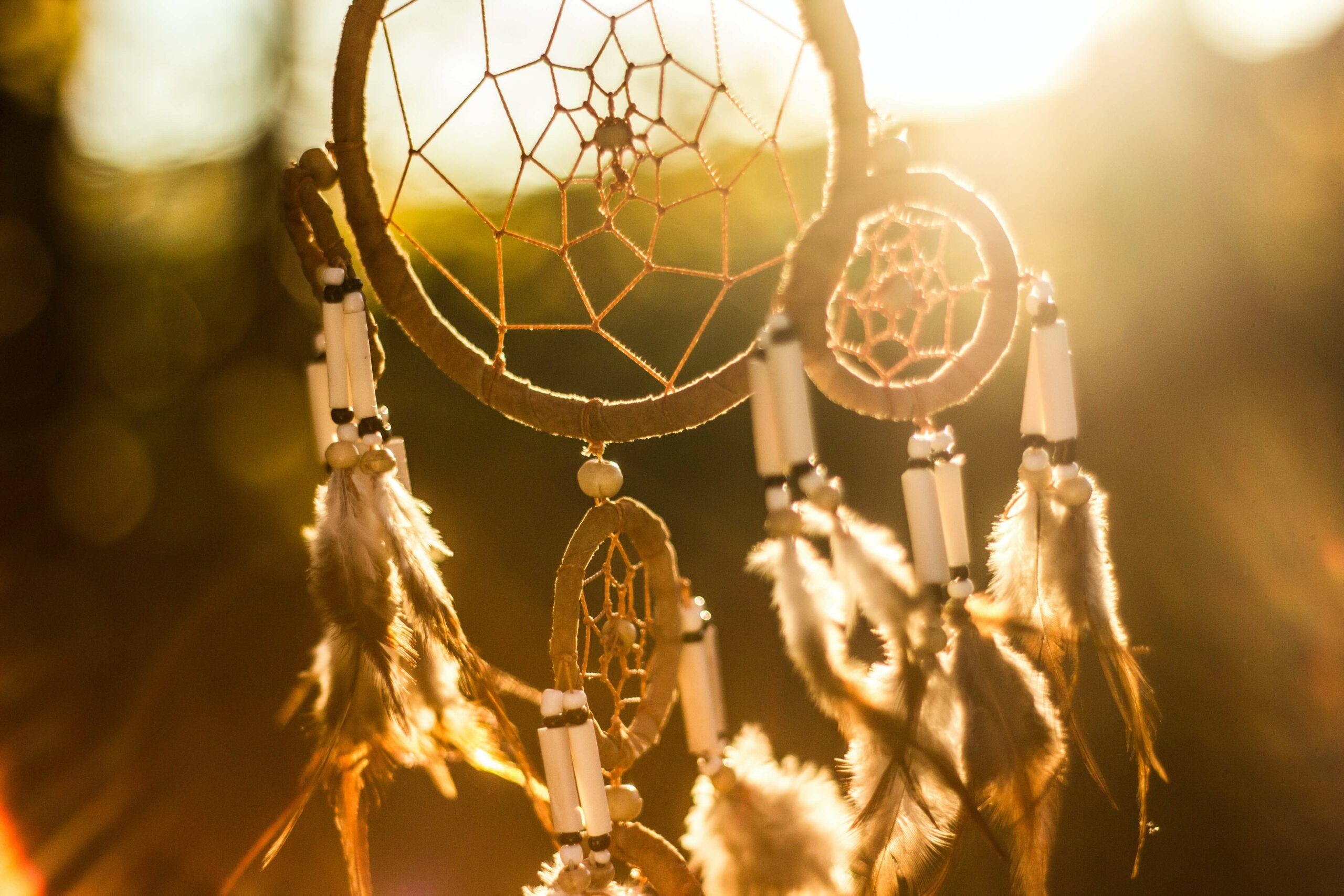Weddings are emotional events that different cultures celebrate with different traditions.
Native American tribes are just as diverse in their practices, and wedding traditions will vary between tribes. While certain tribes may use similar elements in their wedding ceremonies, they can also differ significantly.
Maybe you have recently received an invitation to a Native American wedding and are unsure what to expect, or you are looking to incorporate some traditional Native American elements into your wedding ceremony.
Whatever the case, we’ll cover all the details below.
10 Native American Wedding Traditions and Rituals
There are many smaller ceremonies that Native American weddings include in the larger event. These ceremonies will vary from tribe to tribe, though some tribes will have similar rituals. This is especially the case if they share a language.
Here are some of these ceremonies and the tribes attributed to them.
1. Basket Ceremony
According to the Manataka American Indian Council, Cherokee weddings will include a ceremony where the bride’s mother presents her with a basket of either an ear of corn or a loaf of bread. The groom’s mother will give him a basket with a leg of cooked venison. The bride and groom will later present their baskets to each other to symbolize their commitment to the marriage.
2. Blanket Ceremony
According to the First Nation Ministry, Cherokee wedding ceremonies include a blanket ceremony. However, other tribes will include this ceremony during a couple’s wedding rituals.
In one iteration of this ceremony, the couple is first individually wrapped in blue blankets while an officiant blesses their union. Then, these blankets are removed, and the couple is wrapped in a single white blanket. This white blanket represents their new union, while the blue blankets symbolize their previous lives as individuals.
3. Braided Hair
On the morning of the wedding, a couple in the Hopi tribe will have their hair washed in the same basin by the women of the tribe. They then have their hair braided together to symbolize their lifelong union. With their hair braided together, the couple will walk to the edge of the mesa for prayers to the rising sun.
4. Eagle Feathers
In traditional Algonquin marriage ceremonies, typically in the Ojibwa (or Chippewa) tribe, the bride and groom will hold an eagle feather during the ceremony. Generally, native American tribes consider eagle feathers a representation of connection with the Great Spirit.
5. Fire Ceremony
Many Native American tribes consider fire to be sacred. Some tribes will use sage and other symbolic flowers for smudging to purify the couple and officiant.
At Cherokee weddings, participants make three different fires made from the wood of seven unique kinds of trees. During this ceremony, the couple will sing and offer prayers while they sprinkle their respective fires with tobacco, corn, grass, and sage. Then, they will move their fires toward the main woodpile to light the Creator’s fire.
6. The Giveaway
Algonquin-speaking tribes like the Cree, the Ojibwa or Chippewa, or the Ottawa include wedding favors as part of the celebration. While the couple is preparing for their marriage ceremony, they will also make or purchase gifts for the people attending their wedding.
Each person will receive these favors as part of the festivities. Depending on the couple’s materials or financial means, these gifts will vary in quality and monetary value.
7. Groom’s Processional
Certain tribes are matriarchal, and their traditions will reflect this. In Iroquois wedding ceremonies, the groom is traditionally the one who walks down the aisle to the bride. In other tribes, the groom is usually the one who joins the bride’s family and will live with her family after their ceremony.
8. Navajo Wedding Ceremony
Certain tribes treat wedding ceremonies as private events, and only close family and friends are allowed to witness the proceedings. All the people who witness the ceremony enter the Hogan, the Navajo traditional home, before praying. The groom and his family will bless a bowl of prepared corn mush before the groom eats a pinch of it from each direction. The bride follows suit before the groom’s family finishes the remaining corn mush.
To complete the wedding ceremony, the bride’s family provides food for a feast that everyone takes part in. This final sharing of food is meant to complete the ceremony and join the couple for life.
9. Water Ceremony
In Navajo weddings, brides may pour water onto their groom’s hands. The couple can also wash their hands as a way to remove old memories and their previous wrongdoings.
10. Wedding Vase
Approximately one to two weeks before the wedding, the groom’s parents will make a wedding vase. The husband and his family then bring the vase to the bride’s house, where the couple’s parents offer marriage advice to the couple.
During Cherokee weddings, when the couple includes the vase ritual, they will try to drink out of the vase together. If they can manage to drink from it without spilling any, this means that they will enjoy continued understanding and respect throughout their marriage.
You can easily identify a wedding vase by its two spouts that are joined by a handle. The wedding vase should never be broken or discarded, and couples will keep this vase as long as they are together. If one of them outlives the other, the remaining partner gives the vase to another couple that is still happily married.
Native American Wedding Attire
Couples will wear traditional attire during their wedding ceremonies. This will also vary from tribe to tribe, though most tribes use symbolic colors for their attire. In most traditions, the couple’s wedding attire is also handmade by one side of the family.
1. Cherokee Wedding Garments
At Cherokee weddings, the bride will wear white garments, including a white dress and moccasins. Some brides today wear traditionally styled tear dresses made of calico. These dresses feature geometric shapes since they are made from pieces of cloth torn into squares or rectangles.
Grooms typically wear traditional attire, including black pants, moccasins, and a red shirt. This shirt is then adorned with ribbons.
2. Hopi Wedding Garments
The bride’s wedding attire is prepared by the groom and any other participating men. The garments include two all-white wedding robes, one white wedding robe with red stripes, white buckskin leggings, and moccasins.
3. Northern California Tribal Garments
Northern tribes include the Klamath, the Modoc, and the Yurok, among others. The bride’s dress is woven with symbolic colors for the cardinal directions: white for East, blue for South, yellow or orange for West, and black for North. The couple will also wear turquoise and silver jewelry to shield against bad luck, hunger, and poverty.
4. Pueblo Wedding Attire
Traditionally, Pueblo brides wear a cotton garment tied about the right shoulder. The ensemble is then secured with a belt around her waist.
5. Turquoise Jewelry
Historically, Native Americans did not create jewelry like wedding rings during their ceremonies. The contemporary tradition includes them in turquoise rings for brides and turquoise or opal rings for grooms. The Navajo people consider it traditional for couples to wear heirlooms passed down to them for special ceremonies.
Music
Music and dancing are essential aspects of Native American wedding ceremonies. Singing is the primary form of musical expression, while instrumental music acts as a rhythmic accompaniment. For special occasions like this, flutes, drums, rattles, and whistles are used while singers carry the song.
Musical styles will vary between regions. Great Plains music tends to be forceful and tense, with a high range, while northern California music is relaxed and throaty.
Food
Food is integral to many ceremonies in several Native American tribes, although these inclusions will change from tribe to tribe. However, the symbolism across the board is one of provision. Most interestingly, the Navajo people use ground cornmeal mush during their ceremonies.
Season
Spring and autumn are generally seen as seasons of abundance and promise, which make them good wedding seasons. However, wedding ceremonies aren’t limited to these seasons and occur throughout the year. Historically, weddings took place when it was most convenient for both families.
Different tribes will hold their wedding celebrations at other times as well. For example, the Mohawks get married at sunset and follow the ceremony with a large feast. The Cherokees begin the ritual in their local townhouse and hold their ceremony at sundown seven days later. And the Hopis begin their marriage ceremonies at sunrise before concluding them two weeks later in the evening.
Planning
Planning a wedding is a task in and of itself, but couples must consider a few other things during a Native American wedding. Traditional ceremonies tend to happen outside at a natural site the tribe deems sacred. Contemporary couples may want to blend elements of a modern wedding with traditional roots from their tribe, or they may opt for a modern ceremony entirely.
Any Native American wedding traditions couples choose to incorporate will vary depending on their tribe. As the rest of this article will show, tribes, are incredibly diverse and have distinct rituals to match. While elements are unique to each tribe, some commonalities exist.




